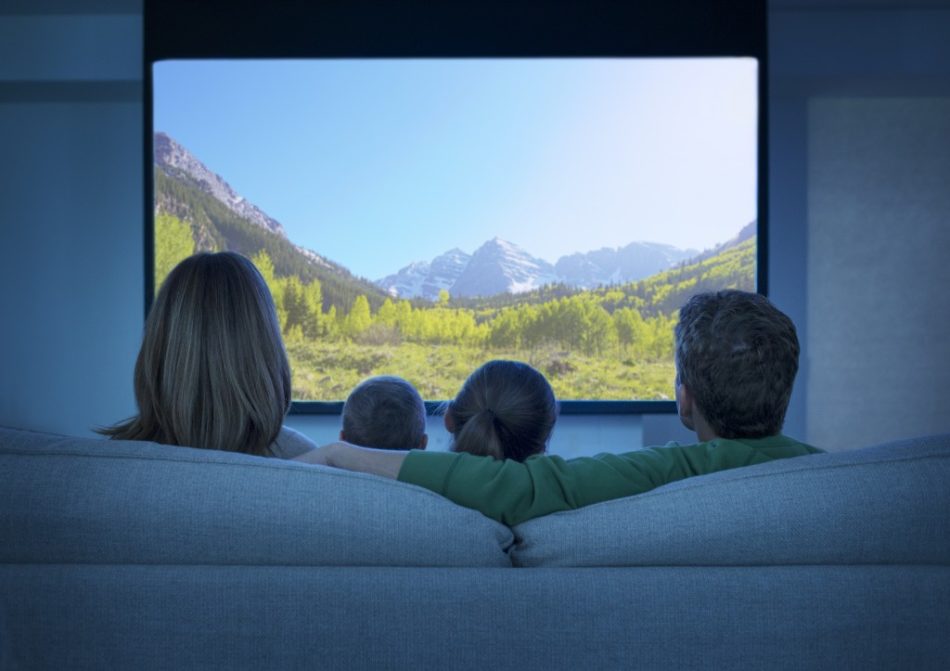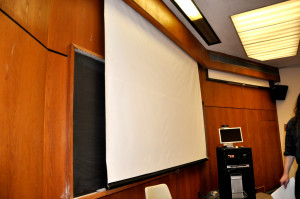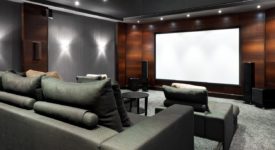Which type of home theater projector screen do you need?
Should you buy a white or grey home theater projector screen. It all depends on where and what you are showing in your home theater setup.
Once you have decided on the type of projector screen and taken the gain factor into consideration, you need to decide on what material your screen is made from.
This can be more challenging since there are different types available. Some yield better results than others. Grey screens reflect less light so handle the darker tones better; blacks appear richer. They work much better in rooms that have little ambient light and are darker. White screens are more versatile.
Matt White
Close to 80% of all home theater projector screens use matt white surfaces due to its versatility. Matt white screens can handle all types of images including business presentations that are graphic-heavy. It can project all colors vividly while keeping a clear image. This screen material is smooth and un-embossed is able to distribute light evenly across large areas with wide angles. You are not going to experience any hotspots, the condition where certain areas on the screen appear much brighter than others so that people viewing from side angles don’t see anything. It’s also the most economical type of material and the most flexible so is often used in portable screens.
High Contrast Grey
This material is a smooth grey vinyl surface that is recommended for high output DLP and LCD projector where there needs to be high-resolution and enhanced blacks. These screens typically have a low gain and work best in low ambient light. The vinyl fabric is very flexible so they can be folded or rolled up without any damage. This is the most recommended for home theater set ups.
High Contrast Matte White
This type of screen works best with low to moderate DLP and LCD projectors in a room where the ambient light source can be moderately controlled. It has a diffuse white reflective surface over a grey base material so it can heighten the black levels without sacrificing the white. Recommended for video images without too many high-resolution graphics.
High Performance
This is the most expensive type of screen as it delivers a precise resolution with higher contrast and vivid color palette while handling ambient light. Created from a tear-proof fiberglass base textile that does not reflect ambient light. Recommended in rooms where the lighting can’t be controlled.
Acoustically Transparent
Created from woven fabric or a diffused surface, the acoustically transparent screen consists of hundreds of small holes. This allows speakers to be hidden directly behind the screen so the sound appears to be coming out of the picture. Often a combination of matt white and high contrast grey screens, they deliver a cinema-like experience with vivid colors and rich blacks along with a wide viewing angle. Best suite for home theaters.






